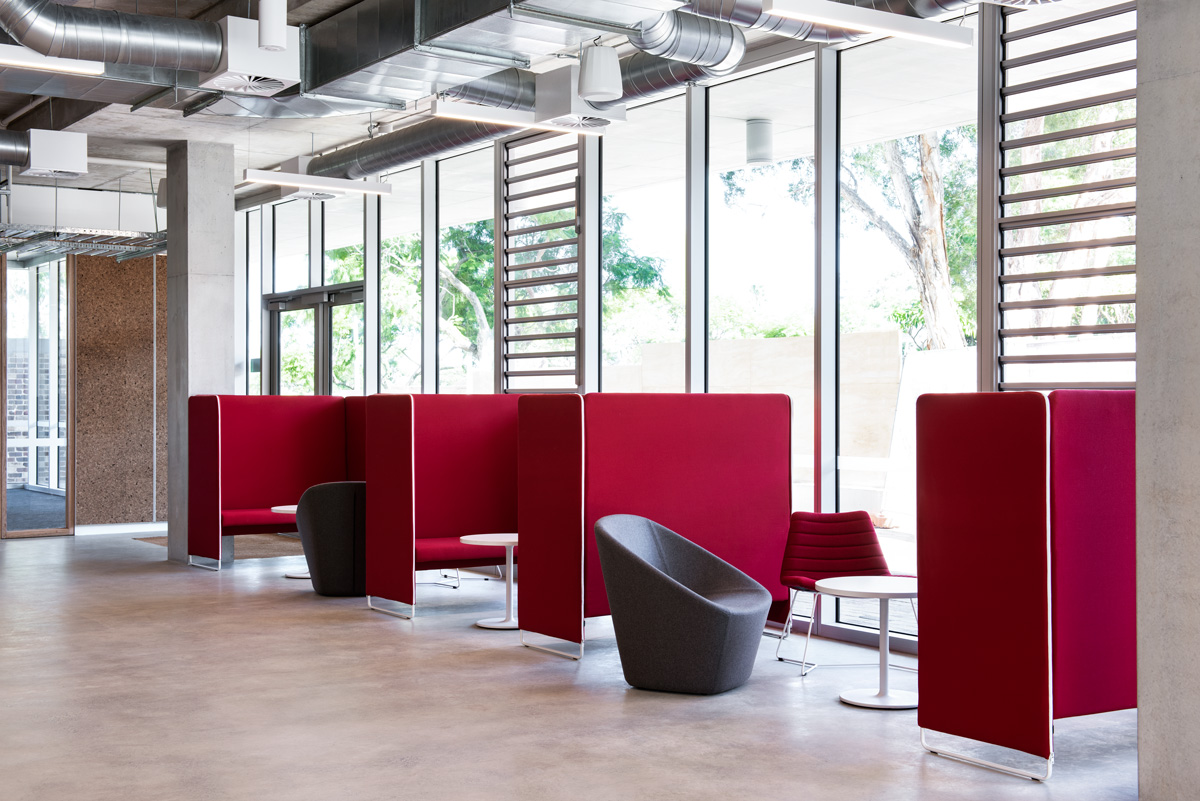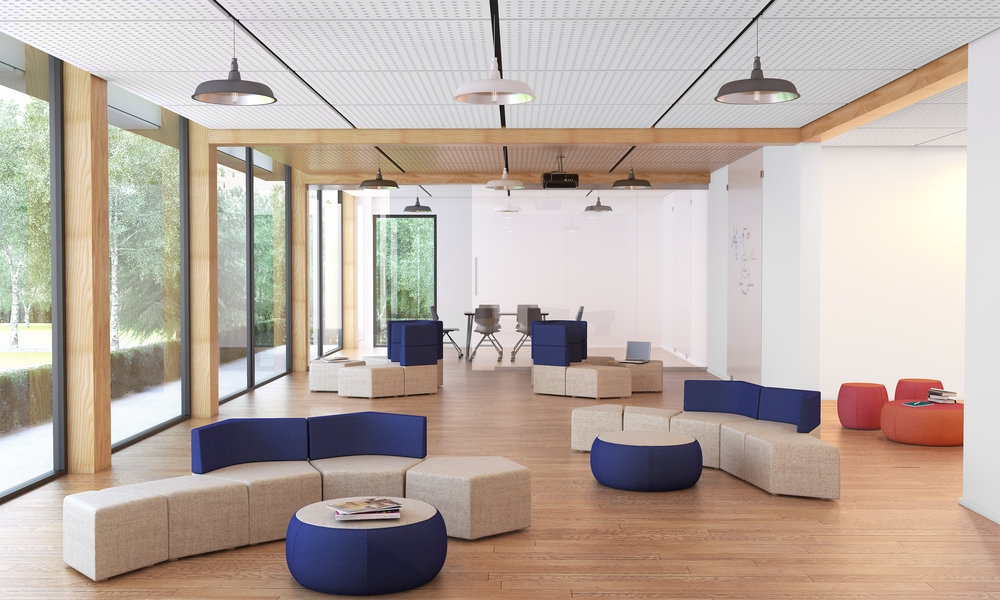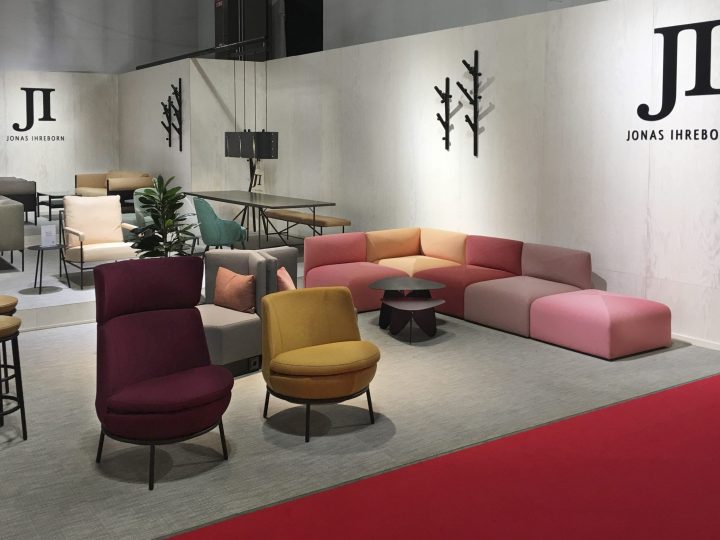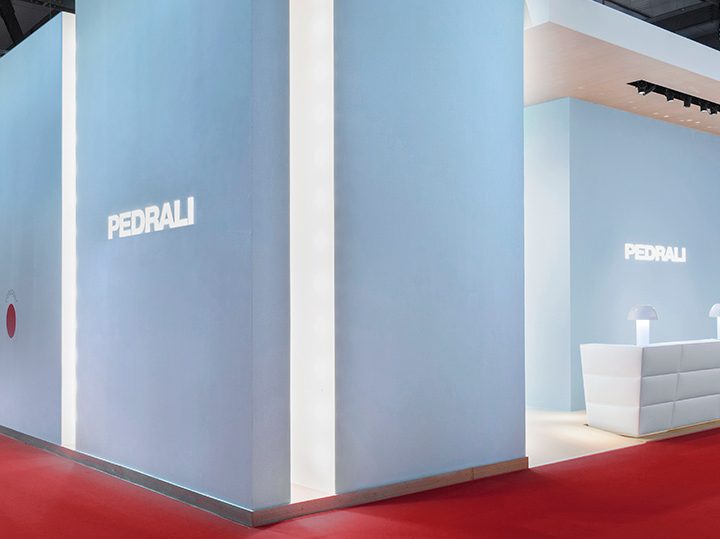Did you know colour can affect neurological pathways in the brain, creating a chemical response that affects our bodies and thoughts in different ways?1 Texture, on the other hand, can create a sensory and energising environment that enhances the overall personal experience.
We spoke to Belinda Herron, Bid & Product Manager at Business Interiors, to explain how colour and texture can affect mood and experience, and to share her top tips on how to incorporate these elements in workplace design.

Belinda Herron, Bid & Product Manager at Business Interiors
Why should you incorporate colour into workplace design?
“In interior design, colour contributes to the overall look and feel of a space but also subconsciously communicates what that space should be used for. Colour can affect mood, behaviour and productivity and that’s why it’s important to choose the right combination of colours for your environment,” says Belinda.
“Colours can also help communicate brand values, so it’s important to understand how different colour palettes feed into the overall vision and values of your business. By incorporating these colours digital displays and furniture, you can really immerse people into your brand,” says Belinda.
Warm colours
“In a workplace environment, warm colours stimulate the brain, encourage action and direct our attention,” says Belinda.
Red boosts energy and evokes a sense of urgency while orange encourages conversation and boosts communication. Use yellow to evoke optimism and energy. However, too much yellow can induce feelings of anxiety so should be used sparingly.
“Mixing bright colours with neutral tones can create a nice balance,” says Belinda. Belinda recommends incorporating warm tones in your workspace as pops of colour, for instance ottomans or lounges.

Methodist Ladies College, Sydney
Cool colours
“Cool colours like blues and greens are common in workplaces because they evoke positive cognitive and emotional responses,” recommends Belinda. Blue is linked with intelligence, honesty and creativity, while green is associated with nature and relaxation. Green is also said to reduce eye fatigue and counteract anxiety.2
“The calming nature of blues and greens make them great for high-pressure environments like conference and meetings rooms. For instance, use dark navy colours in chairs and seating with lighter wood types or white tables,” says Belinda.

Methodist Ladies College, Sydney
Neutral tones
According to research, working in offices with a neutral chromatic atmosphere can increase the risk of burnout by 15% and decrease productivity by 12%.3 Neutral colours like creams, beiges and soft greys make a great base for your space and create a sense of balance when used in combination with other colours. “Start with neutral tones, then build colour from there. Add brighter tones to avoid a sterile work environment,” says Belinda.

Why should you incorporate texture into workplace design?
While colour is important in the workplace, texture is equally important in the design of the office. Belinda notes texture as a crucial element in providing a multisensory experience. “It has the potential to completely transform the look and feel of your workplace, improving both the employee and customer experience.”
Balance
“While colour can influence mood, texture creates balance. It’s an important element in that you can use contrast to balance various design aspects in the office for a more interesting visual aesthetic,” advises Belinda.
To maintain balance, Belinda suggests using only one or two textures. “Don’t overdo it, and if possible, combine texture and colour. If you choose a monochromatic look for your workplace, use textures with significant contrast to bring the single colour to life while creating coherence.”
Depth and dimension
Natural textiles such as wool, linen, and leather are great when developing a friendly and natural workplace design. Furniture with heavier silhouettes, such as chairs and sofas, are a must-have for more designer and elegant offices.
“Be strategic with incorporating textures into your workplace design. Use textures to distinguish different areas of work in the office to create tactile and mood-boosting surroundings,” says Belinda
As workplaces seek to incorporate innovative designs to improve their overall experience, Business Interiors can help enable engagement, collaboration and culture with intelligent furniture solutions that address the evolving needs of employees and organisations. Contact our Business Interiors expert team to enhance your workplace – we can help with everything from a small refresh to a complete fit-out.
1 Shift eLearning, 2019, ‘The Psychology of Color: How Do Colors Influence Learning?’,<https://www.shiftelearning.com/blog/how-do-colors-influence-learning>
2 Schliemann, U., 2017, ‘The Importance of Color In The Workplace’, <https://www.workdesign.com/2017/04/importance-color-workplace/>
3 Humantech, 2020, ‘The Importance of Color in the Workplace’, <https://www.humantech.com/2020/06/the-importance-of-color-in-the-workplace/>




